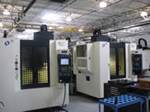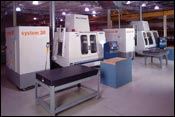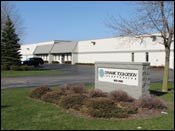Dynamic Tool & Design, Inc.: Automatically Inclined
By fully integrating automation into its process, this shop services its customers from part design to sampling—and everything in between.
Back in January, 1999, when Dynamic Tool & Design, Inc. (Menomonee Falls, WI) was featured in MoldMaking Technology, the company was busy integrating automation into its mold building process. Owners John Lau and Irv Fischer—along with a few members of the CNC staff—carefully researched options before purchasing equipment they felt was a good fit with Dynamic Tool’s operations.
Today, the company has fully integrated automation into its process—undergoing a great amount of change over the past 10 years. Dynamic Tool sales manager Vic Berardi explains the company’s journey below.
From Moldmaking to Mold Manufacture
“While we have gone from a tool and die shop to a mold manufacturer, our focus has still been on automatic manufacturing with 11 pieces of equipment using robotics, and other equipment geared toward around-the-clock machining,” Berardi states. “We also have enhanced our inspection by adding two climate-controlled inspection rooms and adding several CMMs to ensure quality in manufacture and part inspection.
“In today’s environment of mold manufacturing, most molds from our customers are based on additional services so we have enhanced our design—allowing us to aid our customers with part design,” Berardi continues. “We also have added five molding presses with tonnage ranging from 80 tons to 500 tons, which allows us to qualify molds before shipping by performing both first article inspections and CPK studies.”
Additionally, the company has focused its efforts on high cavitation work with close tolerances and interchangeable components.
Staying Competitive
“We see the China issue starting to level off with the markets that we picked to stay here, and we do believe that there will still be companies that close from the economy and the over-capacity that has been created by improved efficacies in our industry so we all need to be aggressive in our cost reduction efforts in our plants, to stay competitive in the global markets. We think that after the next several years our industry will show signs of improvement.”
| A Decade of Difference |
| 1. Biggest industry change: The demand for increased services and technology along with shorter leadtimes and cost reductions. 2. Top challenge in past 10 years: Reducing costs and leadtimes to stay competitive. 3. Top technology solution: Automation, increasing output reducing labor cost. 4. Top business strategy solution: Lean manufacturing for plant efficiencies and additional services. 5. Best time in the past 10 years: Now, because there is a clearer picture of the future. 6. Worst time in past 10 years: The transition time to focus on successful markets. 7. What you remember most in moldmaking in the past 10 years: The struggle with making the adjustments in our plant to stay competitive. 8. A forecast on the industry for the next 10 years: We look for more stability in the work flow, and shops continuing to go out of business because of technology demands. |
Related Content
-
2024 Moldmaking Insights: A Year in Review Part 1
A look back at the top moldmaking trends of 2024, as revealed through MMT's analytics. This review highlights the most popular technical articles, case studies, tips and best practices that captured the industry's attention over the past year.
-
Machine Hammer Peening Automates Mold Polishing
A polishing automation solution eliminates hand work, accelerates milling operations and controls surface geometries.
-
Mold Builder Meets Increased Domestic Demand With Automated Cells
Burteck LLC experienced significant demand increases due to reshoring and invested in automated machining cells to step up its production output quickly and avoid losing business.
















